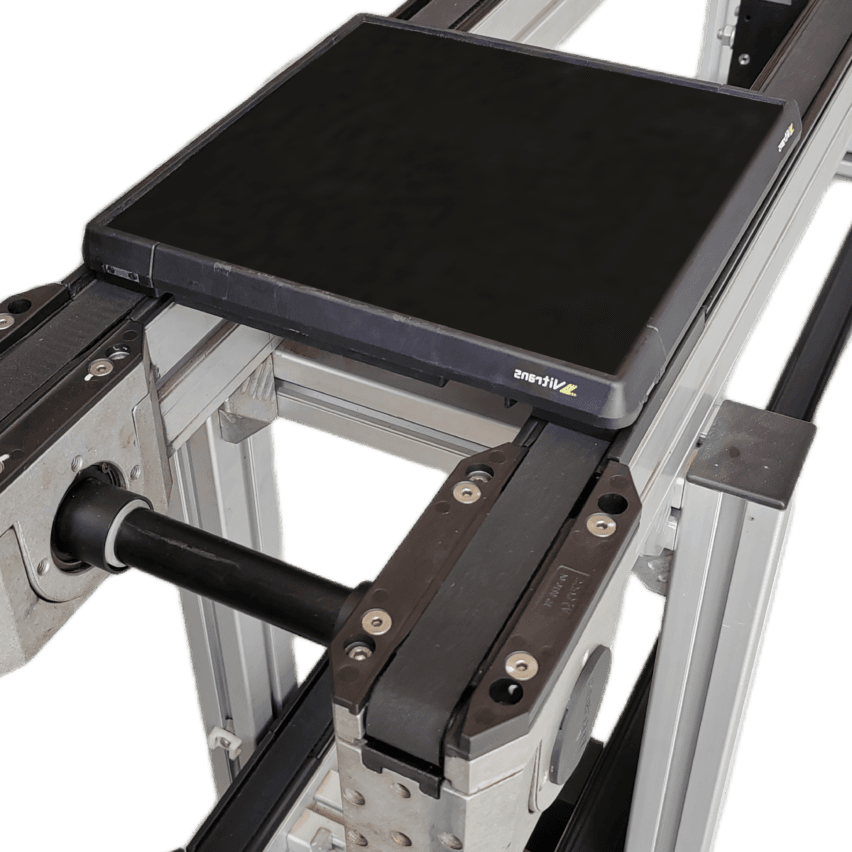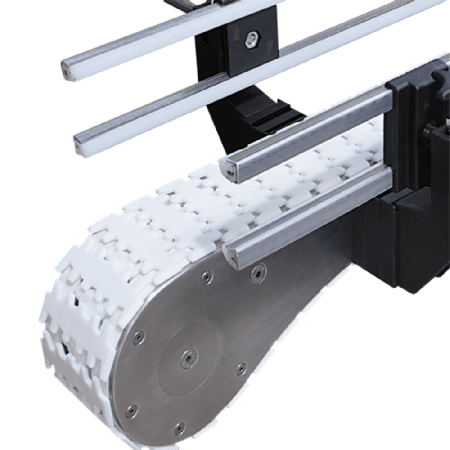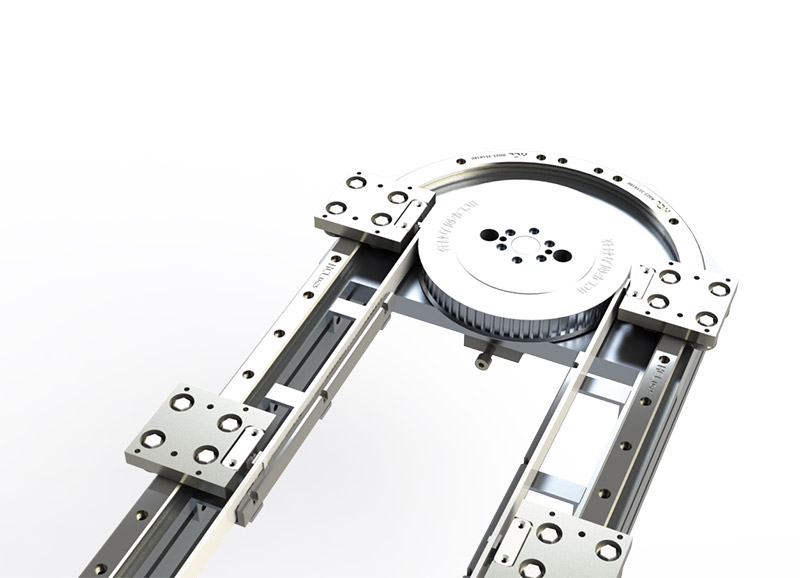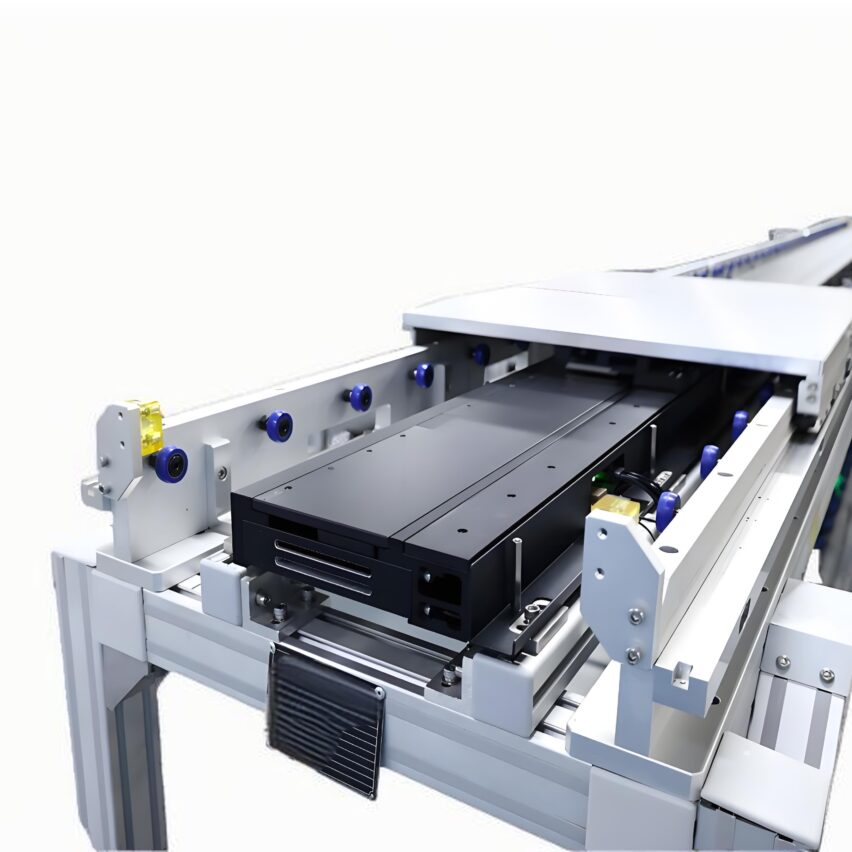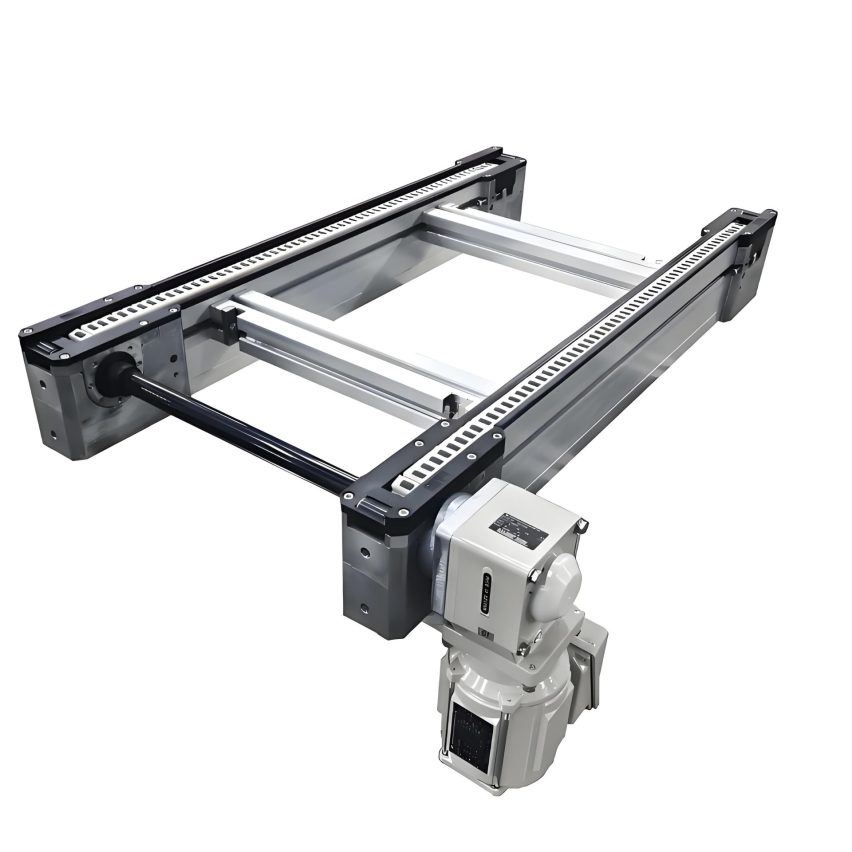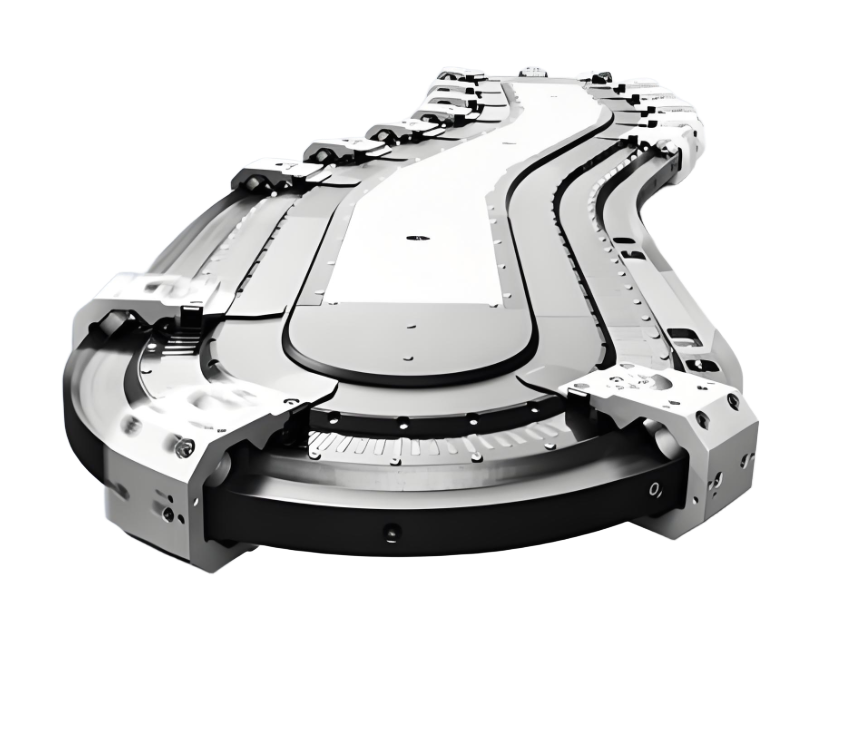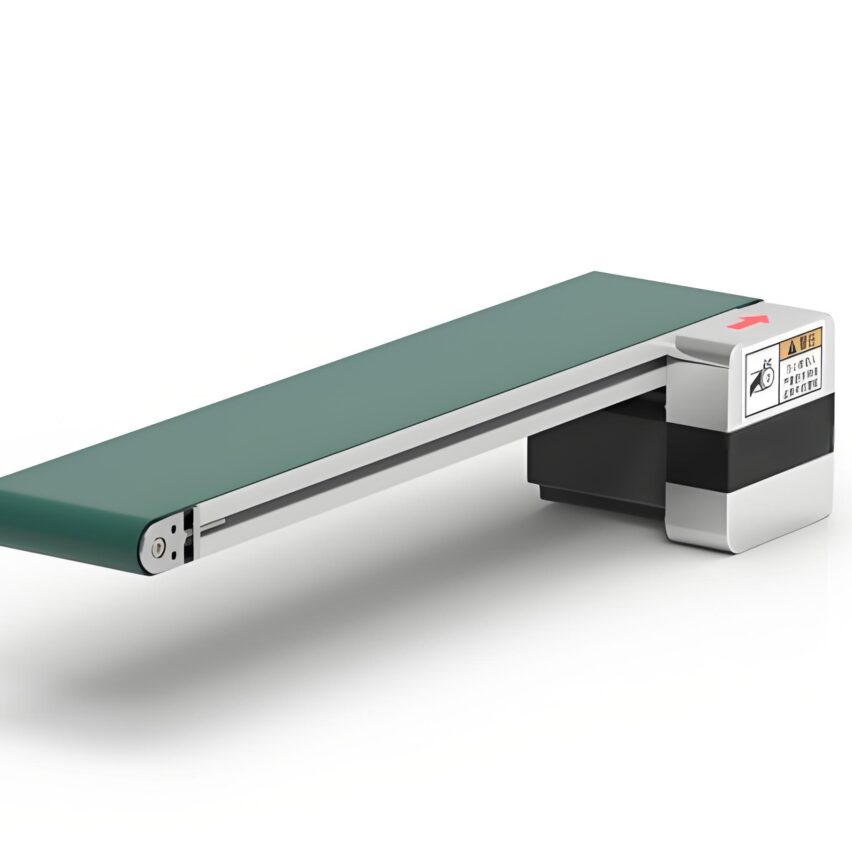In a new energy battery factory in Changzhou, a 16-metre-long double-layer speed chain line is transporting battery modules at a speed of 0.5 metres per second. When a group of battery packs worth tens of thousands of yuan enters the inspection station, the blocker is accurately raised, and the positioning pin is±0.05mm accuracySnap into the pallet positioning holes - the whole process error is less than the diameter of a hair, and the layout of this production line, it is the engineers according to the dead end of the plant customised ring bend structure. Such scenes are being staged in the field of intelligent manufacturing in China.
I. The Mystery of Acceleration of the Multiplier Chain: More Than a "Conveyor Belt"
The core value of the Speed Chain is its uniquephysical speed-up principle. When the workpiece plate is placed on the chain, the actual speed of movement of the workpiece is not simply the chain traction speed. Its speed formula can be expressed as:
V total = V₁×(1+D/d)
(V₁ is the chain travelling speed, D is the roller diameter, d is the roller diameter)
This means that when usingD=2d designWhen this is the case, the workpiece speed can be up to three times the speed of the chain. This superimposed effect of motion allows the line to multiply the conveying efficiency without increasing the motor power.
Of greater concern is the fact that this growth rate mechanism naturally has abuffering function. When the workpiece boards are stacked in front of the blocker, the roller and the guide produce relative sliding to avoid motor overload, which is a physical characteristic that is difficult to achieve in ordinary conveyor lines.
II. Key dimensions of design customisation
1. Load capacity and material selection
- light load scenario(<500kg): Engineering plastic roller with nylon based chain, noise reduction and 30% cost optimisation at the same time.
- overloaded scenario(>1000kg): Steel Roller + High Strength Alloy Chain, Tennant Group Battery Production Line Successfully Carries2200kg module
- extreme case: Great Wall Motor dashboard assembly line passedWider and thicker design of the work plate4,000kg engine transport
2. Balancing speed and accuracy
| Multiplier Type | Applicable Scenarios | Precision control programme |
|---|---|---|
| 2x Chain | Heavy parts handling | Mechanical positioning pin ±0.2mm |
| 2.5x speed chain | Automotive parts assembly | Pneumatic stopper ±0.1mm |
| 3x Chain | 3C electronic assembly | RFID + vision system ±0.05mm |
| The new energy battery PACK line is precisely through the cooperation of 3x speed chain and machine vision to control the cell alignment error within ±0.1mm. |
3. Layout and spatial adaptation
- circular layout: Changzhou Guangliang's 16-metre loop line for VinFast Vietnam, achieving U-shaped return in a 200m2 space
- multilayered architectureDouble-deck speed chain line body saves 60% flat space, vertical lifting module enables cross-floor conveying.
- bend in the road to innovation: S-shaped curve with a radius of 1.2m to solve the problem of interference with the columns of the old plant, and the turning point is adoptedDifferential roller setanti-alias
4. Intelligent control integration
A lesson learnt from an automotive parts factory in Weifang confirms that an unvalidated PLC programme had caused collision damage to 20 gearbox trays. The upgrade programme is now:
- three-tier control architecture: Device layer (sensors + actuators) → Control layer (PLC + RFID) → Decision layer (MES system)
- Dynamic Speed Module: Real-time adjustment of frequency converter through current monitoring, automatic speed reduction to 2m/min in heavy load section and recovery of 8m/min in no load section.
III. Practical mapping of industry customisation
New energy battery field
Anti-static pallets have become standard, a Changzhou enterprise through theCarbon Fibre Composite Workpiece PlateSolve the risk of lithium battery short circuit. More introductionNitrogen Atmosphere Transport ModuleThe battery filling is done during the delivery process.
3C electronic assembly
Dongguan mobile phone assembly line using "Maglev + Speed Chain"Hybrid Design:
- Straight section: 3x speed chain for high speed conveying
- Precision assembly section: switching the magnetic levitation platform, the vibration is reduced to less than 0.05G.
This solution improves patch yields by 12%.
Automotive parts and components
Wuhan Pardek for DongfengHeavy Duty Liftable Wire Body::
- Conventional workstation: 750mm standard height
- Precision assembly position: hydraulic down to 500mm
Worker fatigue decreased by 40%, and the bolt tightening pass rate reached 99.97%.
IV. Customised decision-making framework
Summary of lessons learnt based on 200+ cases:
- Principles for freezing demand: Prohibition of new positioning points after the layout is confirmed ($800,000 in rework losses on a project due to the temporary addition of inspection stations)
- Load Redundancy Design: Actual load ≤ 80% of nominal value (e.g. nominal 2000kg chain carrying only 1600kg)
- Maintenance accessibility: The distance between lubrication points is ≤3m, and 150mm of adjustment margin is reserved for the tensioning device.
- Environmental pre-adaptation: The food line usesSelf-lubricating stainless steel chainFree from grease contamination, foundry increaseHeat-resistant ceramic coating
personal insight: The essence of multiplier chain customisation isSolve the rigidity shortcomings of traditional conveyor systems. I have seen a company blindly pursuing "fully automated", in the corner of the dense area to push the robot on the pieces, the failure rate soared. Successful cases often use "Speed Chain + Artificial Island"A hybrid strategy - automate the main line and keep a window for human intervention at complex workstations. This kind of pragmatism is the true meaning of smart upgrades.
Ask Yourself: Three Questions at the Heart of Multiplier Chain Customisation
Q1: What is the fundamental difference between circulating speed chain and traditional conveyor line?
A: The core differences areDynamic accumulation capacityWhen the workpiece is blocked, the traditional conveyor line has to be shut down as a whole. When the workpiece plate is blocked, the traditional conveyor line needs to be shut down as a whole, while the speed chain can achieve partial stacking and continue to run, together with the lifting and transplanting module, it can achieve dynamic diversion.
Q2: How long does the customisation cycle usually take?
A: 2-4 weeks for standard programme, 8-12 weeks with non-standard module. Changzhou Guangliang'sModular pre-assembly systemThe duration can be compressed by 30%, with the key to use prefabricated components in the driving and curved sections.
Q3: How to control the cost of customisation?
A: Follow the principle of "three distinctions":
- Heavy-duty configuration for high-frequency action zones (e.g. drive section)
- Low-speed section (e.g. detection bit) degradation material specification
- Reuse of existing track for non-critical transitions
A project reduced 22% inputs through this programme.
In the wave of Industry 4.0, the multiplier chain has evolved from a mere conveying tool to aSpace editor for flexible productionThe material flowing on the ring line is not only the material, but also the philosophy of the enterprise to exchange space for time and precision for quality. Those flowing in the ring line are not only materials, but also the enterprise's manufacturing philosophy of exchanging space for time and precision for quality.


